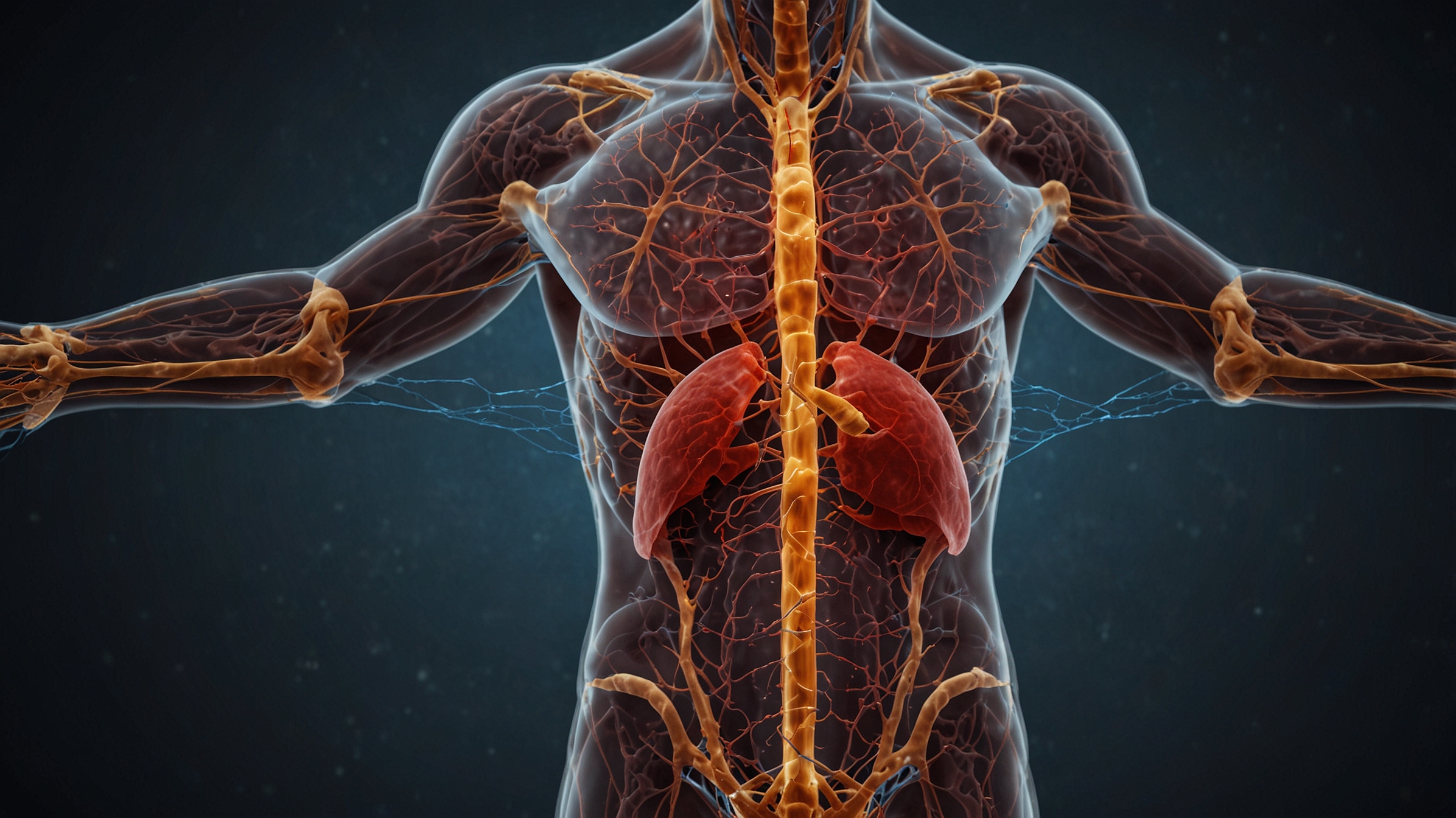How movement, hydration, and massage can help this silent system do its vital job.
When it comes to health, we often focus on the heart, brain, or digestive system. But there’s another network working quietly behind the scenes that plays a crucial role in your well-being—the lymphatic system. Though it rarely makes headlines, this complex web of vessels and nodes is essential for immune defense, waste removal, and even inflammation control.
The best part? You don’t need fancy detox teas or extreme cleanses to support it. With simple daily habits—like movement, hydration, and massage—you can help your lymphatic system flow more freely, boosting both your body’s defenses and overall vitality.
What Is the Lymphatic System, Exactly?
The lymphatic system is a network of vessels, nodes, and organs that works alongside your circulatory system. It transports a clear fluid called lymph, which contains white blood cells, waste products, toxins, and cellular debris.
Think of it as your body’s internal sanitation crew and immune surveillance team rolled into one:
- Lymph nodes filter the fluid, trapping viruses, bacteria, and other harmful invaders.
- Lymphatic vessels move the filtered lymph throughout your body.
- Organs like the spleen and thymus support immune function and lymphocyte production.
When your lymphatic system is working properly, you feel energized, resilient, and clear-headed. When it’s sluggish or overloaded, you may experience bloating, fatigue, swollen limbs, frequent infections, or brain fog.
Why It Matters: Detox, Immunity, and More
Unlike your circulatory system, which has the heart to pump blood, the lymphatic system has no central pump. It relies on body movement, gravity, and muscle contractions to keep lymph flowing. That’s why a sedentary lifestyle, dehydration, or chronic stress can lead to stagnation.
Here’s what a healthy lymphatic system supports:
✅ Immune Defense
Lymph nodes house immune cells (like lymphocytes) that detect and destroy pathogens. A well-functioning lymphatic system helps you fight off infections more efficiently.
✅ Detoxification
Lymph carries waste products away from tissues to be filtered and expelled through sweat, urine, or the digestive system. It’s your natural “detox” mechanism.
✅ Reduced Inflammation and Swelling
Lymph flow helps regulate fluid balance in the tissues. Poor drainage can lead to lymphedema or chronic inflammation, contributing to joint pain and skin issues.
3 Simple Ways to Support Your Lymphatic System
1. Move Your Body—Often and Gently
Because the lymphatic system relies on physical movement to circulate lymph, daily activity is essential. You don’t need a bootcamp workout—just consistent, moderate motion.
Best Lymph-Boosting Movements:
- Walking: A brisk 20–30 minute walk daily helps stimulate lymph flow.
- Rebounding (mini trampoline): This low-impact exercise uses gravity and vertical motion to pump lymph.
- Stretching or yoga: Gentle twists, inversions, and deep breathing improve circulation and drainage.
- Foam rolling or myofascial release: These techniques gently compress tissues, encouraging lymph movement.
Tip: Even a few minutes of stretching every hour can make a difference—especially if you have a desk job.
2. Stay Well Hydrated
Lymph is about 95% water, so dehydration can thicken lymph fluid, making it harder to move through vessels. If you’re not drinking enough, your body’s waste removal system slows down.
Hydration Tips:
- Aim for half your body weight in ounces of water daily (more if you’re active or in a hot climate).
- Start your morning with a glass of warm lemon water to gently stimulate digestion and lymph flow.
- Include water-rich foods like cucumbers, melons, and leafy greens.
Avoid overconsuming caffeine and alcohol, both of which can dehydrate and tax your detox systems.
3. Try Dry Brushing or Lymphatic Massage
Dry brushing and lymphatic drainage massage are two self-care rituals that help stimulate lymph movement and encourage detox through the skin.
Dry Brushing:
- Use a natural bristle brush on dry skin before showering.
- Brush in gentle, upward strokes toward the heart—starting at your feet and working your way up.
- It takes 3–5 minutes and can also exfoliate skin and boost circulation.
Lymphatic Massage:
- A trained therapist uses light, rhythmic strokes to manually direct lymph fluid.
- It can help with post-surgical swelling, fatigue, or sluggish immune systems.
- You can also perform a DIY facial or neck lymph massage to reduce puffiness and tension.
Note: Always check with your doctor before starting lymphatic massage if you have underlying conditions like cancer, heart issues, or infections.
Signs Your Lymphatic System Might Be Stagnant
- Persistent puffiness or swelling (especially in the face, hands, or ankles)
- Frequent colds or infections
- Chronic fatigue or brain fog
- Digestive sluggishness or bloating
- Skin breakouts or dull complexion
These symptoms aren’t exclusive to lymphatic dysfunction, but if they’re persistent, they may indicate a need to support your system more intentionally.
The Bottom Line
Your lymphatic system works around the clock to defend, cleanse, and protect—but it needs your help. Unlike your heartbeat or breathing, lymph flow isn’t automatic. It depends on your movement, your hydration, and how you treat your body every day.
The good news? You don’t need extreme detoxes or expensive treatments. Just move more, drink up, and give your body a gentle nudge with massage or brushing.
So the next time you think about health, don’t forget the quiet hero beneath your skin—your lymphatic system. Nurture it, and you’ll feel the ripple effects in energy, immunity, and overall vitality.





